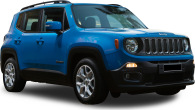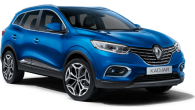Sometimes it’s good to check in on your friends.
You might not have seen them in a while, and they might not be the most recent addition to your circle, but it’s still good to see how they’re doing once in a while.
For this review, we’re checking in with the Mazda CX-30, which we loved when it first arrived, and we of course made some great memories with.
A few years have passed since, and the small SUV space in which it competes has become ever more crowded since.
The question is, should we be spending time with our old pal, the CX-30? Or, is it better spent with one of its new, trendy rivals?
We’ve grabbed a top-spec G25 Astina in front-wheel drive guise to find out.
Mazda CX-30 2023: G25 Astina (fwd)
| Engine Type | Inline 4, 2.5L |
|---|---|
| Fuel Type | Unleaded Petrol |
| Fuel Efficiency | 6.6L/100km (combined) |
| Seating | 5 |
| Price From | $36,630 - $43,560 |
| Safety Rating |
|
Price and features – Does it represent good value for the price? What features does it come with?
When Mazda started what seemed like a push upmarket at the time, the CX-30 was an expensive small SUV. The intention with this car’s look and feel seemed to match the pricing, though, so we all thought Mazda was trying to establish a new semi-premium positioning.
As fate would have it, though, through a pandemic and various fluctuations when it comes to supply and raw material costs, every other manufacturer in this mainstream small SUV space has pushed up the price-scale, too, now making even the more expensive versions of the CX-30 look not so bad value after all.
The specific version we have for this test is the top-trim Astina, using the larger 2.5-litre engine in front-wheel drive form.
.jpg)
The CX-30 range is expansive and confusing, because you can also have an Astina with the smaller 2.0-litre engine, or in all-wheel drive, or even with Mazda’s odd new ‘X20’ engine option which is effectively a supercharged compression-ignition science experiment.
This front-drive 2.5-litre version is probably the pick of the Astina bunch, though, offering the larger engine without the weight or unnecessary cost of all-wheel drive.
Wearing a before on-roads price-tag of $43,310, it now goes into battle with the surprisingly expensive Toyota Corolla Cross (Atmos FWD - $43,550), Honda HR-V (e:HEV L - $47,000), Volkswagen T-Roc (R-Line AWD - $45,200), and the almost as expensive top-spec Kia Seltos (GT-Line FWD - $41,500).
Of course, if these prices, which will approach $50K once you factor in on-road costs, are making you wince, there’s always the more affordable Haval Jolion (from $36,990 for an equivalent high-spec S) or the MG ZST (from $34,990 for an equivalent Essence) from China.
.jpg)
If you’re thinking neither will hold a candle to the Mazda’s dynamics or quality, you’d be right. Read on to learn why.
Before we go on, though, at this Astina grade equipment includes 18-inch alloy wheels, an 8.8-inch multimedia panel with wired Apple CarPlay and Android Auto, LED headlights, a sunroof, heated front seats with power adjust for the driver, a 7.0-inch digital instrument element, surprisingly nice leather interior trim for the seats and wheel, dual-zone climate, a head-up display, and a 360-degree parking camera.
Interesting omissions at this price include a wireless charger, wireless phone mirroring, USB-C connectivity, and while there’s a great safety suite included, there’s also no true hybrid option in the CX-30 range.
Design - Is there anything interesting about its design?
While the Haval Jolions of the world look ready to hit up the McDonald’s drive thru with their youthful flair, and cars like the Toyota Corolla Cross want to save money and dine at home with their conservative appearance, the Mazda CX-30 looks dressed to impress, as though it should be seen at the valet stand of your nearest Michelin-star restaurant.
A few years of age or not, the design of this car is still spectacular at this price, placing it right at the forefront of looks for the mainstream small SUV segment.
The delicate panel work, signature big grille, and large wheels at this Astina grade match nicely with the minimalist light fittings which themselves come complete with a soft-fade effect for the indicators.
.jpg)
It’s attention to detail like this which makes the CX-30 look like it belongs in a price-bracket above, and demands rivals pay attention.
The interior meets expectations, too, which is no small feat given some cars in this space prove it’s one thing to look great, and quite another to match it with a truly premium feel.
Mazda has done a fantastic job in the cabin which feels the part with an abundance of soft-touch materials, a dark, modern colour scheme, and an overall vibe which is ageing well even compared to more recently launched rivals.
I would go so far as to say, at the Astina grade the CX-30 feels more like it should be competing with Lexus, certainly punching above the mark, even at its mid-$40K price-point.
.jpg)

Practicality – How practical is its space and tech inside?
It looks good and feels good, but is it practical? While the CX-30 is larger than its smaller CX-3 sibling, it still leaves space to be desired, especially compared to some other segment-bending small SUVs it competes with.
The front seat is not where the bad news starts though. It feels spacious enough inside for a couple, with large seats, plenty of space separating the front two occupants, and plenty of comfort on offer with padded armrests on both sides.
There are big bottle holders in the doors and in a flip-open bay in the console (wouldn’t want to interrupt this design… ), and there’s additional storage once you slide and flip open the armrest.
To keep things tidy, your USB and 12V power connections are also located in the console bay. No need for messy cables, and there’s a little divider, too.
.jpg)
On the downside here, there’s a chunk of dead space under the climate unit, which looks like it could be filled with a shelf or, better yet, wireless charger. As it is, it’s just a plastic panel with a small bay underneath which barely fits a phone.
Adjustability is great for the driver, with a reach- and tilt-adjustable steering wheel, and high belt-line offering a sporty hatch-like feel, which I instantly felt comfortable with.
The rear seat isn’t as impressive. While the fancy seat trim and soft-touch points mostly continue, some of the padding in the doors has been replaced with hard plastic, and there’s a raise in the floor to facilitate all-wheel drive on some variants which eats into the centre occupant’s foot space.
Behind my own seating position, my knees have a tiny amount of room, and so does my head, at 182cm tall. Technically, I fit, but it’s close, and feels it.
.jpg)
Rear occupants get a padded drop-down armrest with two bottle holders, an extra two surprisingly large ones in the doors, but no power outlets. There are two adjustable air vents on the back of the centre console.
The coupe-like design also has a cost when it comes to boot space. There’s 317-litres (VDA) of space available, although we could only fit the CarsGuide luggage set when the parcel shelf was removed.
The space is suitable for a couple on a weekend adventure, but a bit tight if you have more requirements, like a pram-age child, for example.
There is an under-floor space which houses a space-saver spare wheel and part of the Bose sound system.
Under the bonnet – What are the key stats for its engine and transmission?
This is where the Mazda is really showing its age. G25 variants are powered by a 2.5-litre four-cylinder engine, which isn’t turbocharged, nor is it assisted at the wheels by electric motors in a hybrid arrangement.
It’s punchy enough to keep the pace with most of its turbo rivals, putting out 139kW/252Nm, and some will love the fact it’s paired with a traditional torque converter automatic instead of a rubbery continuously variable or glitchy dual-clutch set-up, but it’s certainly not for the eco-conscious.
Not only is it a relatively large displacement engine, but aside from a start-stop system there’s little to mitigate your emissions. In fact, this unit only complies with Euro 5 emissions regulations, well behind the pace today.
.jpg)
Driving – What's it like to drive?
The CX-30 is awesome to drive. In a sea of lacklustre small SUVs, it’s instantly easy to connect with this Mazda. Yes, the engine and transmission here aren’t the most recent additions to the landscape, but they are predictable, smooth, and easy to deal with.
In fact, one thing Mazda is particularly good at is making its entire range feel homogenous in terms of the drive experience, maintaining the great dynamics which the brand has become synonymous with.
The touchpoints continue to be fantastic on the move. The steering feels light and easy to turn at low speeds, but becomes purposeful and full of feel at higher speeds.
The direct feedback on offer from the rack and the firm springs up front give a great handle on what the front wheels are doing.
.jpg)
The overall feel is firm and reactive, ready for action, and while not everyone will love the hard edge to the suspension, it helps the car feel springy and agile in the corners.
You can feel the Mazda 3 DNA on full display when you’re driving this car in haste, and it’s a kind of dynamism which most rivals can’t match, even if the Mazda’s drivetrain is feeling a little low-tech.
You certainly don’t need to worry about the six-speed transmission, which is a smooth-shifting unit.
There’s no glitchy behaviour on hills or from a stop like you might get in a dual-clutch, or rubbery surging under acceleration often delivered by a CVT, just the feeling of the car riding each gear out, and shifting between clearly defined ratios.
.jpg)
Drivers of older vehicles especially will appreciate its instantly familiar feel.
Ergonomically, it’s pretty straightforward, with the one major downside being the dial set-up. We like physical controls rather than touch controls, but Mazda has taken this to the extreme by not making the main multimedia screen a touch unit.
Instead, you’re forced to negotiate with phone mirroring software using a rotary dial, which is at best clumsy, and at worst distracting.
It’s also a tad difficult to see over this car’s high beltline, making it hard to tell where the corners are, front and rear, and a common Mazda problem is the wing mirrors which seem to have a zoom factor on them. Why? It limits your view into the lanes next to you.
Thankfully the active safety suite spends most of its time in the background and unlike some more recent offerings in the small SUV space, not interfering with the excellent drive experience.
The lane keep software is light handed, and the driver monitoring tech is more basic, which is honestly all you should need.
Overall then, the CX-30 is predictable, familiar, and has a fantastic quality to its handling which fits the Mazda brand promise.
Aside from a few blemishes then, it’s one of the best cars to drive in the segment, just don’t expect it to feel as cutting-edge as it could.
Efficiency – What is its fuel consumption? What is its driving range?
Some bad news, of course, comes at the fuel pump. The official claim for this relatively large engine is a bit bold, at 6.8L/100km on the ADR combined cycle, but if you’re using it for mainly urban duties as we did for this review I wouldn’t be surprised to see figures more in the region between 8.0 and 9.0L/100km.
As it stands, our car produced an average of 7.8L/100km, which is better than expected, but still painful in the era of hybrids and fuel-sipping turbos, especially when fuel is close to $2.00 a litre in most capital cities.
Mercifully, the lack of complexity from this engine does mean you can put bog-standard 91 RON unleaded in the tank.
.jpg)
Warranty & Safety Rating
Safety – What safety equipment is fitted? What is its safety rating?
I love the lack of invasive safety tech in the CX-30, but that’s not to say this car lacks any of the required gear.
Active equipment includes freeway-speed auto emergency braking, lane keep assist with lane departure warning, blind-spot monitoring with rear- and front-cross traffic alert, adaptive cruise control, adaptive high-beams, driver attention alert, and traffic sign recognition.
.jpg)
You also score a very nice 360-degree parking camera and sensors, as well as a suite of seven airbags.
The CX-30 scored particularly highly across all of ANCAP’s testing criteria, with a particularly impressive 99 per cent in adult occupant protection. It achieved this rating in 2020.
Ownership – What warranty is offered? What are its service intervals? What are its running costs?
As with all Mazdas, the ownership proposition is pretty straightforward. There’s five years of warranty, five years of roadside assist, and five years of capped price servicing.
Service costs are pretty tame, too, with our front-drive G25 Astina working out to an average of $360 per year for the first five years.
You’ll need to visit a workshop once every 10,000km or 12 months, whichever comes first.
.jpg)
Verdict
I’m glad we checked in on our old friend, the Mazda CX-30. Despite being a car with two wheels planted in the future, and two firmly planted in the past, it manages to hold the line against many of its newer rivals, both on the cheaper and higher-tech end of the spectrum.
What you see really is what you get with this Mazda; it’s lovely to drive, looks fantastic, and punches above its weight when it comes to cabin ambiance. While what’s under the bonnet might no longer be in vogue, driving this car again has only reinforced its standing as small SUV royalty.
Pricing Guides





.jpg)
.jpg)
.jpg)
.jpg)
.jpg)
.jpg)
.jpg)
.jpg)
.jpg)
.jpg)
.jpg)









































 copy.png)















.jpg)
.jpg)
.jpg)
.jpg)





.jpg)
Comments